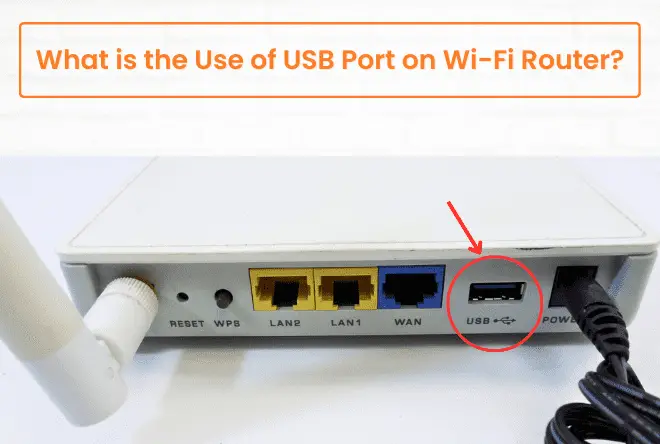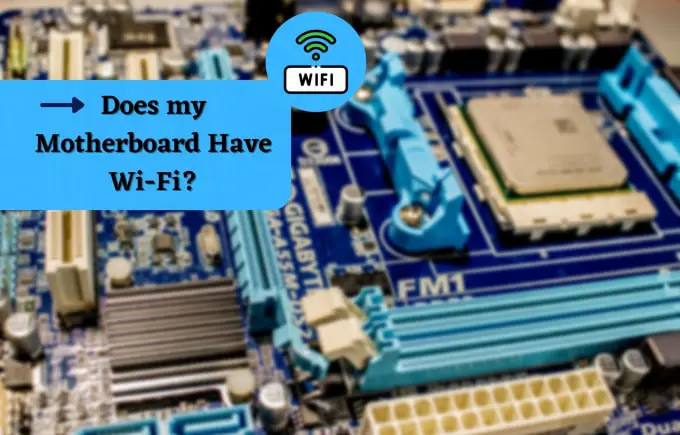You might wonder why some Wi-Fi routers come with USB ports. That’s precisely what I plan to discuss today.
Unlike the Ethernet ports that deliver internet service, a USB connection on a router is designed to serve various functions simply to extend the router’s capabilities. Routers like the ASUS RT-AX3000 and Linksys WRT3200ACM even boast a USB 3.0 port, promising faster data transfer rates than previous USB 2.0 ports.

So, what exactly does this port do? Primarily, a USB port on a Wi-Fi router is used to connect storage devices using a cable—for example, an external hard drive or a USB flash drive.
Let’s know in more detail.
Uses of USB Port on your Routers
1. File Sharing (NAS)
The most obvious use case of a USB port on a router is to share files with other devices connected to the same Wi-Fi network.
Just by plugging in an external storage device like a USB flash drive or an external HDD or SSD, you will be able to share files among your devices without physically transferring them each time. It’s like creating your very own personal cloud storage.
It also acts as a Network Attached Storage (NAS) system that lets you access the files on every device in the network. This means no more fumbling with USB drives or tedious uploads to cloud services.
The convenience is undeniable, whether for sharing documents in an office setting or distributing media files to family members.
2. Media Server / Streaming
The media streaming feature is a game-changer. With a NAS set up, the router’s USB port turns into a media server almost instantly.
Connect an external drive and configure it through router software. Voila – music, photos, movies, and videos are ready to be streamed to smart TVs, computers, and other networked devices, transforming a small room into a personal cinema without additional wires or adapters.
3. Printer Connectivity
Another feature of a USB port-equipped router is sharing a printer over the network. This means any computer, laptop, or mobile device connected to the same network can print wirelessly without connecting a cable to the printer. It’s perfect for offices with multiple devices and users with reduced cable clutter.
4. 3G/4G USB Modem Support
One can connect a 3G or 4G USB modem dongle to the router’s USB port. This functionality is handy when a traditional wired broadband connection (like DSL, fiber, or cable) is unavailable or as a backup option for continuous internet connectivity.
It essentially serves as an alternative means of connecting to the internet via a cellular network provided by the USB modem to establish an internet router again.
Common Issues with USB Port on a Wi-Fi Router
Not everything was smooth when I had a USB port on my wireless router. Let’s know the some of the common issues you might run into.
Compatibility Issues
As I’ve noted before, USB ports on routers may seem like a perfect solution for network-wide access to peripherals. However, compatibility issues are a frequent headache. Driver problems are common—especially when you’re trying to share a printer across your network.
You might get lucky and have a seamless setup, but routers, particularly less expensive models, often struggle to communicate effectively with various devices. This is especially true when attempting to connect multiple devices simultaneously through a USB hub.
Slow Transfer Speeds
Another problem I’ve encountered with USB ports on routers is slower-than-expected transfer speeds.
Although USB version 3.0 offers significant speeds up to 400MBps, these are not always seen in practice. It’s clear that USB 3.0 brings a performance gain, supporting faster transfers from external drives. However, actual speeds can be much lower due to several factors, such as the router processing power, the quality of the USB cable, and the performance of the connected storage device.
This can be particularly troublesome when streaming media files from a connected device.
In tests conducted with various routers, the reality is that the speeds often fall short. Portable SSDs, which are significantly faster than traditional hard drives, still underperform relative to their potential when plugged into a router’s USB port.
Thus, if you rely on a router’s USB port for frequent large file transfers or a busy home office setup, it is better to get a router with a built-in USB 3.0 which can provide consistent high-speed transfers with latest WiFi 6 or latest.
Limited Functionality
While USB routers are a convenient way to share devices, it’s important to note that they may not support all of the features you’d have with a direct connection. For example, some printers might be unable to use advanced printing options or scanning capabilities when connected through a router’s USB port.
Additionally, if your printer requires a specific driver or software to function, you may need to install that on every device connected to the router to use it. This can cause compatibility issues and add complexity.
FAQs
How do I access a USB device on my router?
To access a USB device connected to your router, ensure the device is properly inserted into the router’s USB port. Then, open your computer’s network discovery to find the router-shared device, or enter the router’s IP address into a web browser and look for USB storage settings in the router’s admin panel.
What is the 3.0 USB on my router?
The USB 3.0 port on the back of your router is designed for connecting external storage devices such as USB flash drives and hard drives, letting you share files across your local network at higher transfer speeds than older USB 2.0 ports.
What is the USB connection on my Asus router for?
USB port on the back of an Asus router is meant to connect USB storage devices such as flash drives or external storage drives, enabling file sharing over the network. It’s unsuitable for USB devices requiring additional drivers or non-storage USB devices.
Is it possible to use the Internet through a USB port from a router?
No, it’s not possible to use the Internet through a USB port on your router. The USB connection on routers is typically designed to connect external storage devices, printers, or other peripherals and not to access the Internet directly.
Can a USB port on a router be used for backup?
To utilize a router’s USB for backup purposes, you can connect an external storage device, like a hard drive, and transform it into a network-attached storage device (NAS). This configuration enables both backup functionality and file sharing within your local network.
Related
- WiFi Extender vs Access Point, Which one Better to use?




